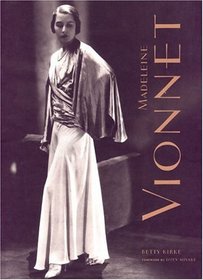Search -
Madeleine Vionnet
Madeleine Vionnet
Author:
Madeleine Vionnet's greatest distinction as a designer was her discovery of the bias cut. Cutting patterns along the bias forces the fabric to cling to the body and move with it, which created her trademark look of draped, form-conscious clothing. When designer Issey Miyake first saw a Vionnet dress, it was like the first time he saw Winged Vict... more »
Author:
Madeleine Vionnet's greatest distinction as a designer was her discovery of the bias cut. Cutting patterns along the bias forces the fabric to cling to the body and move with it, which created her trademark look of draped, form-conscious clothing. When designer Issey Miyake first saw a Vionnet dress, it was like the first time he saw Winged Vict... more »
ISBN-13: 9780811819978
ISBN-10: 0811819973
Publication Date: 1/1998
Pages: 244
Rating: ?
ISBN-10: 0811819973
Publication Date: 1/1998
Pages: 244
Rating: ?
0 stars, based on 0 rating
Genres:




